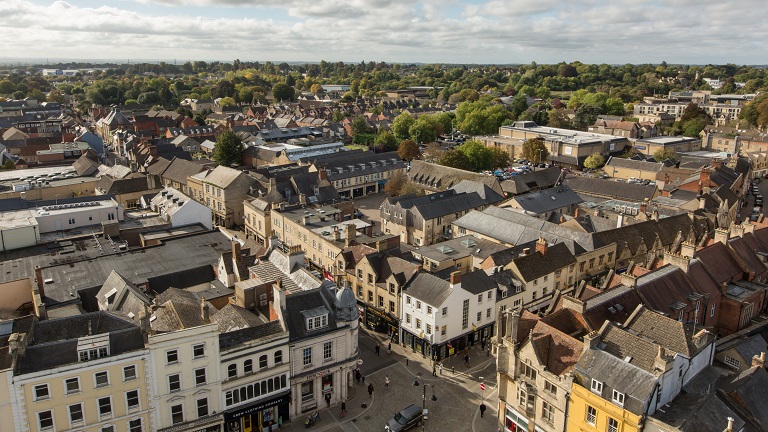One of the greatest examples of its kind, Cirencester’s Roman amphitheatre is located just outside of the town walls and draws history-lovers from far and wide.
The History of Cirencester's Amphitheatre
Once known as Corinium, Cirencester was, in the Roman era, one of the most important towns in the whole of the UK – with only London greater in size. With a population of more than 10,000 inhabitants, it was a prosperous settlement with a thriving wool trade and was extensively developed by the Romans. Just some of the work carried out included significant road networks and a number of civic constructions, like a forum and basilica.
Cirencester’s amphitheatre was one of the Roman constructions to be built at the time, completed in the early 2nd Century AD. Yet, less than two centuries after the amphitheatre was finished, Corinium’s glory days drew promptly to a close as the Roman Empire began to crumble and collapse across the West. Ultimately, in AD 408, the final contingents of the Roman army left Britain for good and Cirencester was left to fend for itself.
Without the financial input and order of the Romans to support the local community and economy, as well as the loss of the town’s central administration, town life in Corinium rapidly deteriorated. The town’s amphitheatre became one of the many casualties of the fall of the Empire and despite being a focal point of the community, no private backers could be found to fund public games and so the once thrilling clamour of the arena fell silent.
Eventually, Cirencester’s amphitheatre was converted into a defensive fortress in an attempt to restore order and safeguard the community. Ultimately though, the new fortifications only held out for so long before the town fell to Saxon advances in the 5th Century AD. It wasn’t actually until the Middle Ages that the amphitheatre was used for entertainment again. Locally known as the Bull Ring, it’s thought that some of the amphitheatre’s grim spectacles included bull-baiting.

Design of the Amphitheatre
In contrast to the circular amphitheatres of Silchester and Dorchester (also home to a famous Roman townhouse), Cirencester’s amphitheatre itself is oval in shape and has entrances at each of the narrowest ends. The enormous banks, which are all that remain of the amphitheatre today, once supported tiers of seats and facilitated 8,000 spectators – both seated and standing. The floor of the arena was coated in fine gravel and sand (“harena” meaning sand in Latin) and a wall was erected to separate the onlookers from the arena itself.
Of the amphitheatre’s two opposing entrances, only the eastern end has been excavated. It’s believed that it was originally open to the sky, but that at some point towards the latter half of the 2nd Century, its passageway was topped with a stone ceiling and extra seating was created above it. As well as the vaulted roof, additional constructions are thought to include two small rooms on either side of the inner entrance. One of these is believed to have been created as a shrine to Nemesis, an ancient Greek goddess of divine retribution – a common feature of other Roman amphitheatres.
Visiting
If you would like to visit the amphitheatre, it’s open every day, all year round, during daylight hours. Dogs on leads are welcome and facilities and parking can be found in Cirencester.
Cirencester Amphitheatre, Cotswold Avenue, Cirencester GL7 1XW | Cirencester Amphitheatre - English Heritage
Feeling inspired? Take a look at our luxury cottages in the Cotswolds here.